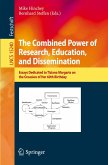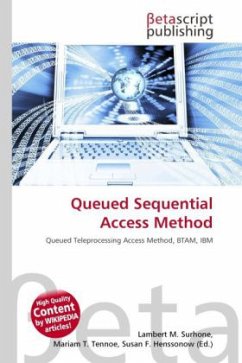Packet switches are used in the Internet to forward information between a sender and receiver and are the critical bottleneck in the Internet. Without faster packet switch designs, the Internet cannot continue to scale-up to higher data rates. Packet switches must be able to achieve high throughput and low delay. In addition, they must be stable for all traffic loads, must efficiently support variable length packets, and must be scalable to higher link data rates and greater numbers of ports. This work investigates a new combined input and crossbar queued (CICQ) switch architecture. The two primary contributions of this work are 1) a complete understanding of the performance characteristics of the CICQ switch, and 2) new methods for improving the performance, stability, and scalability of the CICQ switch. This work has shown that the CICQ switch can be the switch architecture of the future.
Bitte wählen Sie Ihr Anliegen aus.
Rechnungen
Retourenschein anfordern
Bestellstatus
Storno








